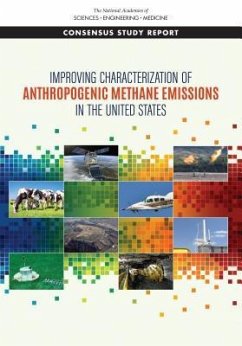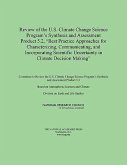Understanding, quantifying, and tracking atmospheric methane and emissions is essential for addressing concerns and informing decisions that affect the climate, economy, and human health and safety. Atmospheric methane is a potent greenhouse gas (GHG) that contributes to global warming. While carbon dioxide is by far the dominant cause of the rise in global average temperatures, methane also plays a significant role because it absorbs more energy per unit mass than carbon dioxide does, giving it a disproportionately large effect on global radiative forcing. In addition to contributing to climate change, methane also affects human health as a precursor to ozone pollution in the lower atmosphere. Improving Characterization of Anthropogenic Methane Emissions in the United States summarizes the current state of understanding of methane emissions sources and the measurement approaches and evaluates opportunities for methodological and inventory development improvements. This report will inform future research agendas of various U.S. agencies, including NOAA, the EPA, the DOE, NASA, the U.S. Department of Agriculture (USDA), and the National Science Foundation (NSF).
Bitte wählen Sie Ihr Anliegen aus.
Rechnungen
Retourenschein anfordern
Bestellstatus
Storno




![Daily Bulletin of Simultaneous Weather Reports, Signal Service, United States Army, With the Synopses, Indications, and Facts [With Maps] Daily Bulletin of Simultaneous Weather Reports, Signal Service, United States Army, With the Synopses, Indications, and Facts [With Maps]](https://bilder.buecher.de/produkte/71/71652/71652300m.jpg)



